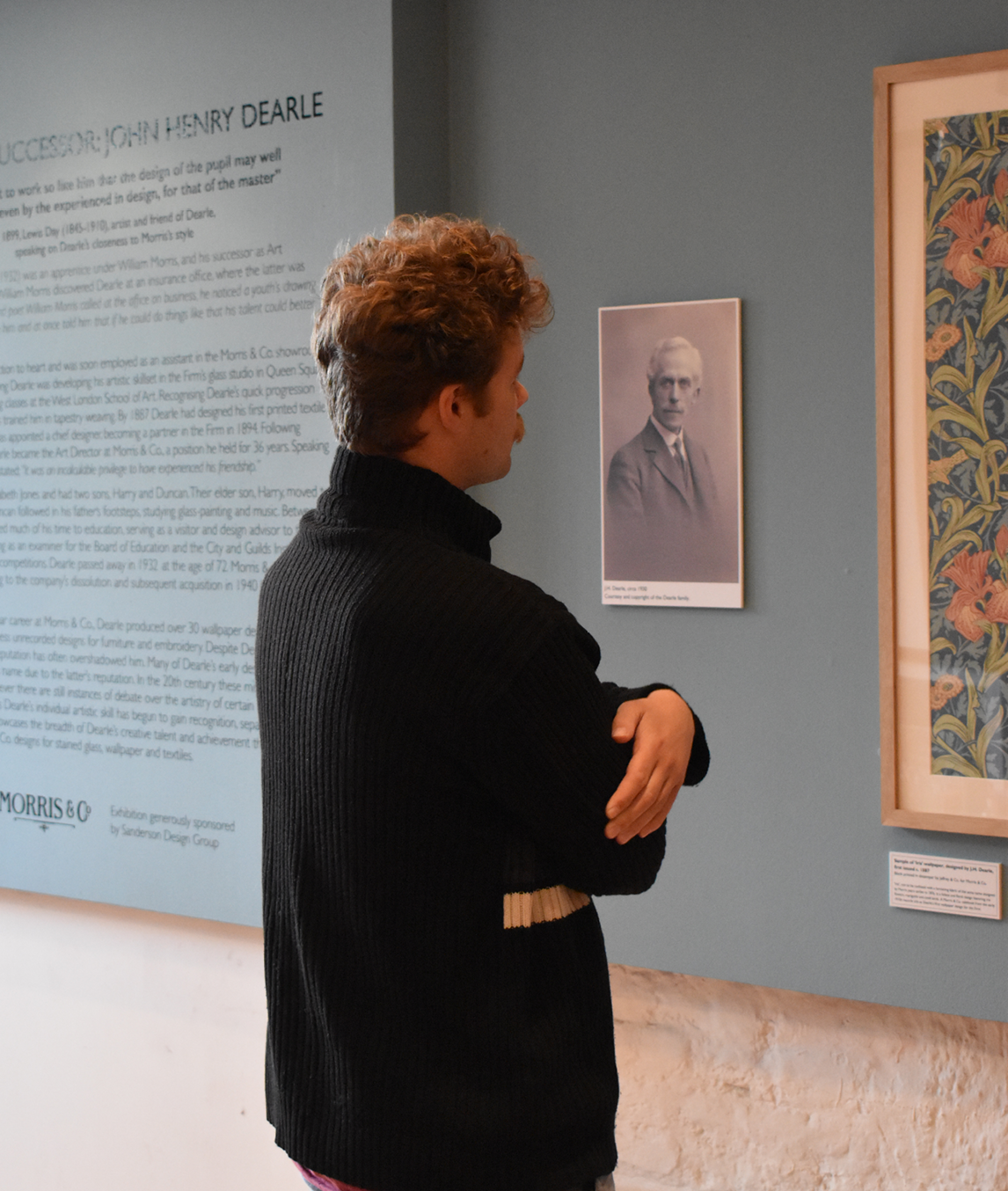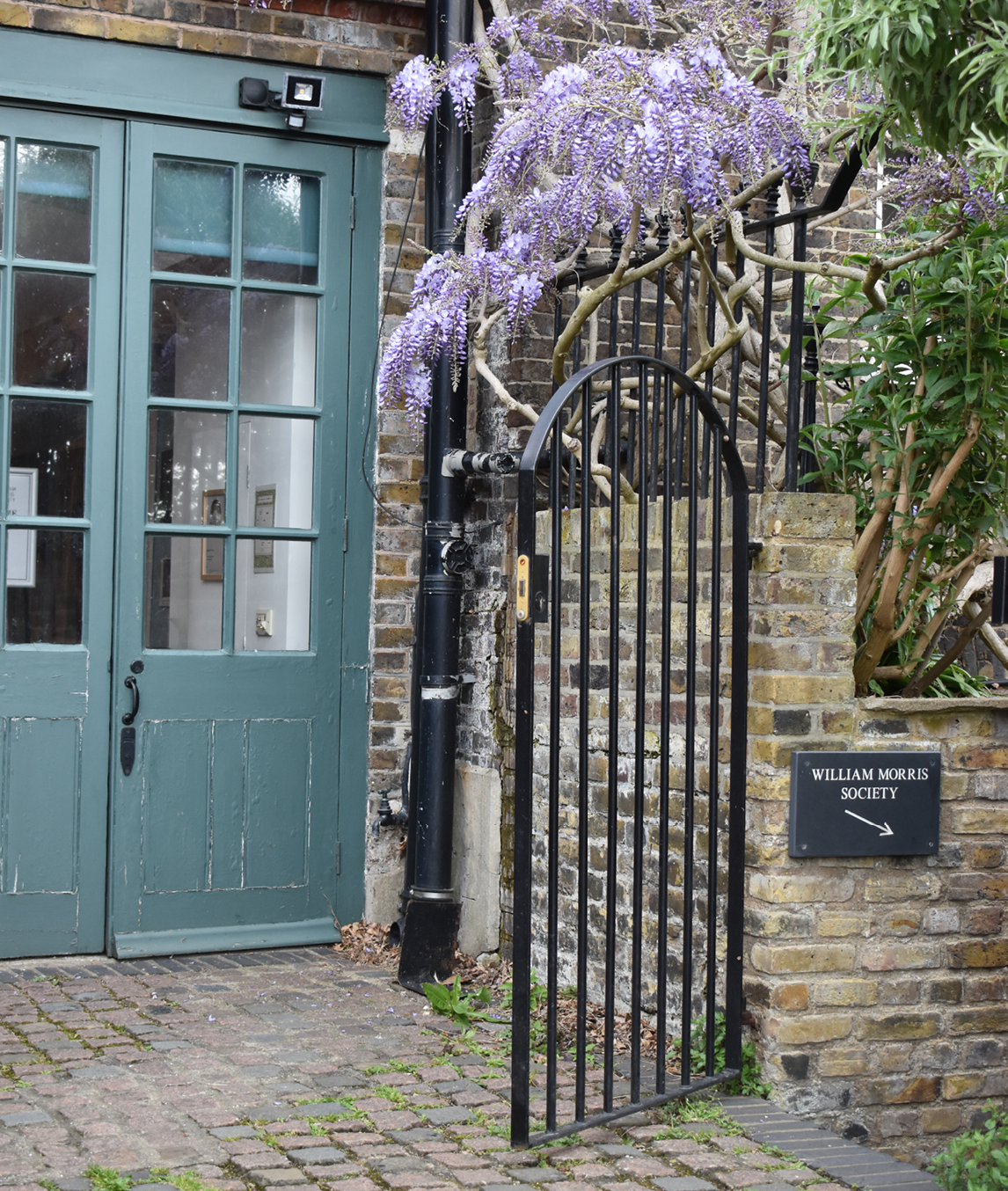Morris’s Successor | John Henry Dearle | An Exhibition Review

The great shadow cast by designer, environmentalist, poet, socialist and Morris & Co. founder William Morris is surely one of the longest of any 19th century figure. However, as with all shadows, they cast into the shade many whose contributions helped to consolidate Morris’s and Morris & Co.’s reputation as heroes of the Arts & Crafts movement.
One such character, now stepping out of the shadows in the William Morris Society’s latest exhibition, Morris’s Successor: John Henry Dearle, is the aforementioned, Dearle.
Dearle was a man whose talents as a designer for Morris & Co. were so prolific and conducted with such fidelity to Morris’s own style, it’s only since the middle of the 20th century that designs are being correctly reattributed to him. Over a career of 50 years at Morris & Co., he authored over 30 designs, working his way up from shop assistant in the Oxford Street Morris & Co. store, to William Morris’s tapestry apprentice and eventually his successor as Artistic Director of ‘The Firm’ upon Morris’s death in 1896.
Morris’s Successor: John Henry Dearle, is the first major exhibition to platform Dearle, and therefore one of the first attempts to redress this unfortunate imbalance. Taking in the many aspects of Dearle’s creative faculties, the image of a man thoroughly cut in the Morris-ian image emerges: a tapestry weaver, a stained glass practitioner, a wallpaper and fabric designer, a draughtsman. It is impossible to leave this small but atmospheric exhibition space without a sense that Dearle casts quite the shadow himself.
John Henry Dearle, The Exhibition
Evocatively describing the many facets of Dearle’s quintessentially Morris & Co. education, the exhibition opens on a reflection of his contribution to tapestry weaving. Representing the Holy Grail, a tapestry which featured the work of Pre-Raphaelite painter Sir Edward Burne Jones, William Morris and Dearle, is a Platinum Print by Frederick Hollyer from 1896. Capturing the collaborative approach which characterises so much of Dearle’s formative years at Morris & Co., the Platinum Print would have been used as a sales tool in the Oxford Street store in which he was a humble assistant only a few years earlier.
In addition to his work on tapestries, Dearle began creating silk embroideries from around the 1880s. A portiere, used for hanging over a door or doorways, exemplifies Dearle’s capacity in this art, too. With lush vegetation, realistic tulips, birds and a climbing vine, it’s a breathtaking work of depth and colour. The exhibition’s curator, Mallory Horrill, has included a preparatory sketch of the silk as an accompaniment to the finished piece, demonstrating Dearle’s meticulous planning and providing a moment of sober appreciation for the lengths taken to achieve his artistry.


On the opposite wall, fans of Dearle’s wallpaper designs are treated to a tour de force of his greatest triumphs. From Golden Lily 1899 - created with such fidelity to the Morris style it is the commonest victim of misattribution - and Iris 1887, to the virile motifs of Artichoke 1898, Seaweed 1901 and the more intricate Edwardian styles.
What we find most delightful is observing how, over the 30 designs authored by Dearle, he seemed to grow into an expressive style that is uniquely his own. From his almost forensic ability to emulate the style pioneered by Morris, to the likes of Artichoke and Seaweed, Dearle became a master at the oversized motif. The boldness and drama mixed with the jewel-like intricacy of tiny details, is just one reason why his oeuvre is loved the design world over - and why he’s a hero round these parts, too.
Do go and see the exhibition, on display until 17th December 2023. The William Morris Society is open to the public with the newly extended opening times of Thursdays, Saturdays and Sundays from 12-5.
The William Morris Society, 26 Upper Mall, Hammersmith, W6 9TA
Tel: +44 (0)208 741 3735
posted on 11 May 2023 in Events





